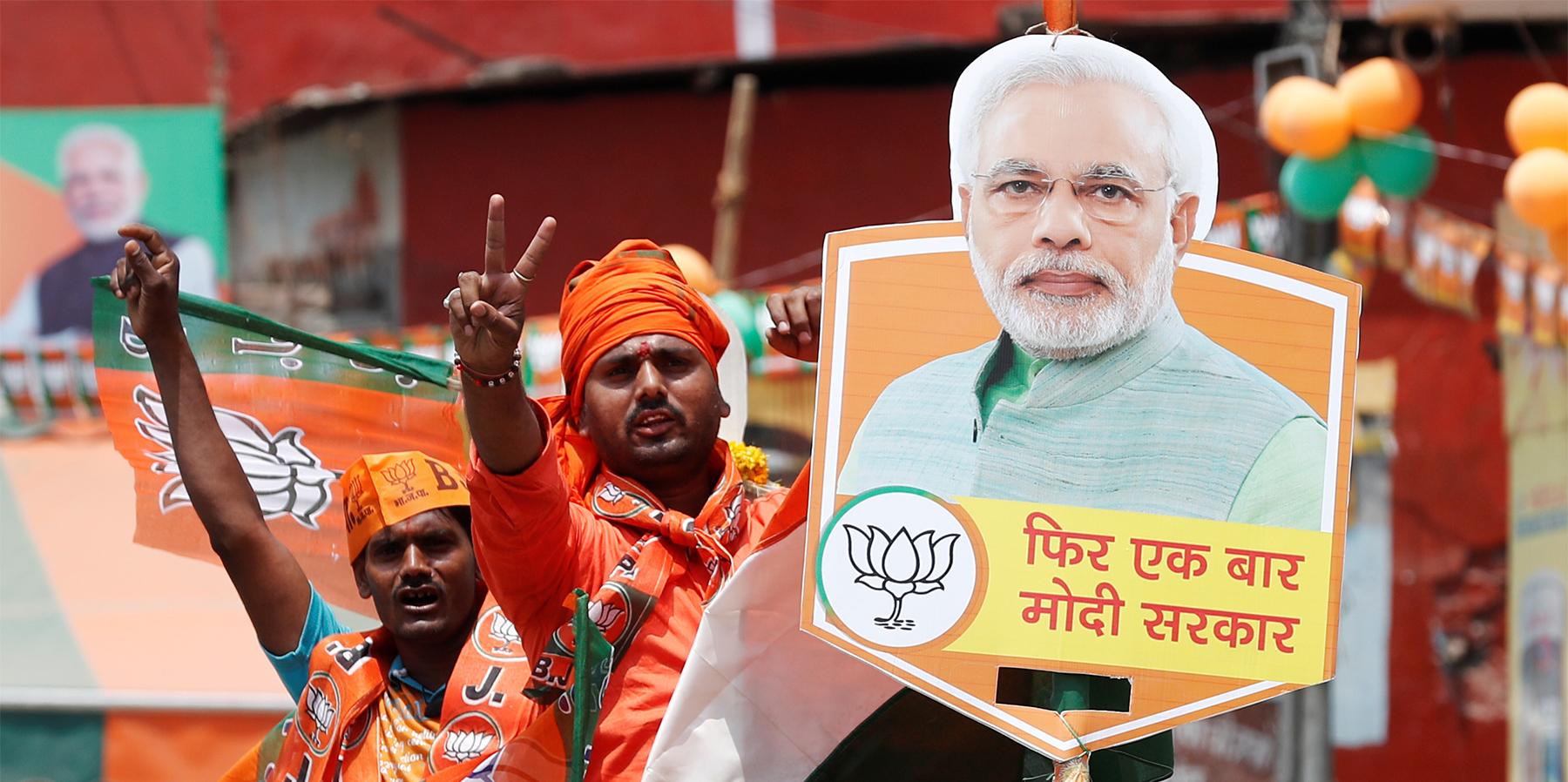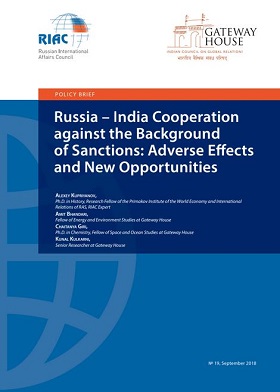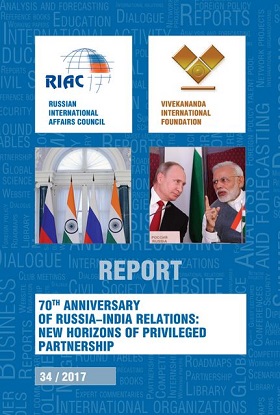In the seven-plus decades of their diplomatic relations, Moscow and New Delhi have successfully built stable strategic, military, economic and diplomatic ties. Regardless of their outward differences, Russia and India face many similar tasks both domestically and internationally. Domestically, both need to ensure inter-ethnic and social harmony within poly-ethnic and poly-denominational states with millions of inhabitants. The examples of Kashmir and Chechnya helped the two countries gain an insight into the evils of aggressive nationalism, religious extremism, terrorism and separatism sooner and more clearly than others.
Opposition to the attempts to establish unipolar leadership in global affairs also deserves mention. Russia and India are democratic states that adhere to the principles of democracy in their domestic affairs, which in turn determines their general commitment to democratic conduct in international affairs. Russia and India are also united by the fact that Muslims form the second-largest denominational community in both states. And we are not talking recent migrants, as in Western Europe today, but rather people who have for centuries lived side-by-side with Orthodox Christians in Russia, and with followers of Hinduism and other Indian religions in India.
Russia–India relations hold independent value for both countries. India is sympathetic to Russia’s international actions. During the Soviet era, New Delhi did not condemn the deployment of Soviet troops in Afghanistan. Nor has it joined the chorus of those condemning Crimea’s incorporation into Russia today. New Delhi also supports Russia’s stance on Syria, declaring that it would never use sanctions against Moscow.
On January 26, the people of India will celebrate the Republic Day. Seventy years ago, on January 26, 1950, the Constitution of India entered into force, proclaiming the country a sovereign socialist secular democratic republic. This year is a double anniversary for the country — 90 years ago, on January 26, 1930, the Indian National Congress that led the national liberation movement officially declared fighting for India’s complete independence of the British Empire as its goal.
India has much to celebrate on the 70th anniversary on the Republic. In 2000 and 2017 alone, the country’s economy grew 3.3 times, whilst its contribution to the gross world product in terms of purchasing power parity in 2017 (7.4 per cent) became the world’s third-largest after China and the United States’ respective indicators. Its armed forces are the world’s fourth-strongest behind the United States, Russia and China. India has nuclear missiles and a space programme comparable to those of Europe, China and Japan. The technological breakthrough made by the country has been particularly evident in the rapid development of information technologies. Since the early 2000s, India has been the world leader in IT exports and has dominated the global IT outsourcing market.
Russia and India are close friends and partners. It is not only a matter of common roots: the Russian words for “mother” (mat’), “brother” (brat), “fire” (ogon’), “light” (svet) and even “husband’s brother” (dever) and “husband’s father” (svyokor) are virtually the same in Sanskrit, from which all Northern Indian languages originate. The Russians did not go to India to conquer it. The images of the faraway magical land of India inspired Russian thinkers, poets, composers and artists. The cultural influence was mutual: Leo Tolstoy’s great influence on the views of Mahatma Gandhi is well known.
In the seven-plus decades of their diplomatic relations, Moscow and New Delhi have successfully built stable strategic, military, economic and diplomatic ties. Thousands of Russians took part in building industrial facilities in India. Military equipment manufactured in Russia accounts for a significant part of the arsenal of the Indian Armed Forces. Tens of thousands of Indian engineers, doctors and other professionals have been educated in Russian universities. Russian and Indian scientists have close ties, and their joint work spans a large number of fields, from applied medicine to space exploration. Indian tea, coffee, spices, medications and other consumer goods are extremely popular in Russia.
Regardless of their outward differences, Russia and India face many similar tasks both domestically and internationally. Domestically, both need to ensure inter-ethnic and social harmony within multimillion, poly-ethnic, and poly-denominational states. The examples of Kashmir and Chechnya helped the two countries gain an insight into the evils of aggressive nationalism, religious extremism, terrorism and separatism sooner and more clearly than others.
Opposition to the attempts to establish unipolar leadership in global affairs also deserves mention. Russia and India are democratic states that adhere to the principles of democracy in their domestic affairs, which in turn determines their general commitment to democratic conduct in international affairs. India was among the countries that were instrumental in the establishment of the Non-Aligned Movement, which as early as the first years of the 1960s was pointing the international community in the direction of the polycentric word order that is so actively discussed today.
Russia and India are also united by the fact that Muslims form the second-largest denominational community in both states. And we are not talking recent migrants, as in Western Europe today, but rather people who have for centuries lived side-by-side with Orthodox Christians in Russia, and with followers of Hinduism and other Indian religions in India. Russia and India’s long-standing engagement with Islamic history, and their geographic proximity to the leading Islamic states, determine both the special place of the two countries when it comes to the most urgent issues that concern the Islamic world today and their special role in handling problems related to the Middle East, Iraq, Iran and Afghanistan.
From the very beginning, the independent India set itself the goal of becoming a leading global power. However, for a long time, its international actions were bolstered solely by its moral authority and the support of friendly Asian and African non-aligned states. To join the “major league of international players,” it needed powerful economic, scientific, technological and military potential, something it has today.
India’s objective for the near future is to entrench itself as the key power of the region that spans the Indian Ocean and Southeast Asia. India hopes to overcome the negative geopolitical consequences of the 1947 division of the former British India into India and Pakistan along religious lines. Not only did this division result in the ongoing conflict with Islamabad over Kashmir, but it also cut India off from culturally related countries and its natural markets in Southeast Asia, Afghanistan, Iran and the Persian Gulf states.
The incumbent Prime Minister Narendra Modi has given New Delhi’s international activities in this area a measure of confidence and assertiveness. Since the early 1990s, governments in India have pursued the Look East policy, which involved expanding economic ties and political interaction with the states of Southeast Asia. Under Modi, Look East been transformed into the Act East Policy, which is intended to both stimulate India’s economic growth and align its strategic priorities with those of its leading partners in the Asia Pacific, namely Vietnam, the ASEAN as a whole, Japan and Australia. The Act East Policy is ultimately intended to expand and boost India’s regional and global role.
Look East is supplemented with Look West, which is geared toward the Persian Gulf states. This policy has several far-reaching goals. First, the Persian Gulf is a major economic partner, home to over 6 million Indians and the principal source of oil and gas. Second, the region has long-standing historical ties with India — not only is it close neighbour, it is also a connecting link with Central Asia and Afghanistan.
Third, “Look West,” as some analysts in India have noted, is also intended to give an impetus to changes in the relations with Islamabad in the future, when, instead of being a wall between India and the Persian Gulf region, Pakistan would become a kind of bridge between them. India, in turn, would become Pakistan’s “gateway” to Southeast Asia. India appears to be banking here on Pakistanis stepping over 70-year-old dogmas regarding Kashmir and eventually realizing that cooperation with India in the Persian Gulf could be far more profitable for them than confrontation. A reconciliation between India and Pakistan would have a significant economic effect both for regional economic integration and for broader interregional cooperation between the states of Central Asia, South Asia and the Persian Gulf.
Unlike the United States, Western European countries and China, Russia has never had a conflict of interests with India, nor is one likely to appear in the future. The increasing role of India—a country that is friendly towards Russia — in international affairs, be it globally or in the Middle, Near or Far East (given India’s significant economic presence in all those regions and a populous Indian community there) would objectively decrease the urgency of the foreign political challenges currently facing Russia.
Russia–India relations hold independent value for both countries. India is sympathetic to Russia’s international actions. During the Soviet era, New Delhi did not condemn the deployment of Soviet troops in Afghanistan. Nor has it joined the chorus of those condemning Crimea’s incorporation into Russia today. New Delhi also supports Russia’s stance on Syria, declaring that it would never use sanctions against Moscow. Historically, India’s regional and global interests have largely coincided with those of Russia, rather than the other great powers. India’s most important and complicated foreign political issues are concentrated in its relations with China and Pakistan as it has been involved in armed conflicts with both countries. New Delhi understands that these issues cannot be resolved without Russia, just as the Look East and Look West policies cannot be fully implemented without Russia. It is no coincidence, for example, that Prime Minister Modi visited the 2019 Eastern Economic Forum in Vladivostok. He intends to expand India’s economic presence in the Russian Far East.
The situation is much the same with Look West, where India, among other things, is interested in Central Asia being free from extremism and terrorism. India is also interested in establishing the North–South Transport Corridor from the Arabian Sea to Western Europe. Russia has a defining role in both cases.
Neither the radical political and economic changes in Russia and India nor the general shifts in the global situation could stop new wrinkles and points of concern from being introduced into Russia–India relations. It is telling that Moscow and New Delhi refer to their relations as a privileged strategic partnership, rather than in terms of friendship and cooperation.
Proof of the strategic nature of this partnership can be found in the interaction between the two countries on key issues of international politics, as well as in the fact that, beyond politics, bilateral relations are driven by energy (including nuclear energy), military-technical cooperation and peaceful exploration of space, areas that are of strategic importance for any state.
India imports one third of the oil and gas it consumes and is investing heavily in the development of Russia’s energy resources. This fact is of special significance for Russia today, when the sanctions imposed on Russia mean that companies from the West are prohibited from participating in new Russian oil and gas projects, including those in the Arctic. India urgently needs to develop its nuclear sector, and Russia is the only foreign state that builds nuclear power plants there. Russia has made this decision in favour of a state that is not a party to the Non-proliferation Treaty because it trusts India and values the partnership it has with that country. Russia also supports India’s accession to the Nuclear Suppliers Group.
India is the only country to have a long-term weapons cooperation programme with Russia in place. It is the only state that has received help from Russia in the development of a nuclear submarine project. India has also leased a nuclear submarine from Russia and purchased Russia-Israel-made AEW&C aircraft. The Admiral Gorshkov aircraft carrier was modernized for India, where it was renamed the Vikramaditya. The high-efficiency cruise missile BrahMos was developed jointly by the two countries, and a fifth-generation combat fighter aircraft is now being developed jointly as well. India is expected to be the only recipient of the high-precision GLONASS (Russia’s global navigation system) signal for the purposes of defence and security.
Seventy per cent of India’s military’s combat equipment was manufactured either in Russia or in India under Russian licenses. It is unlikely that India would allow itself to become so dependent on Russia in the military sphere if it did not have full confidence in the strategic partnership. But this is strategically important for Russia as well. After the collapse of the USSR, Russia’s defence complex found itself in dire financial straits. India alleviated the situation by placing large defence orders with Russia. In a sense, New Delhi forced the Russian defence industry to accelerate the modernization process by placing orders for equipment with highest technical requirements.
Russia–India communication is of great practical importance for Russia in terms of studying India’s experience and using it to solve a number of problems. I will dwell on only two examples. First, like Russia, India is a federative state. Its constitution clearly demarcates the powers of the central and local authorities. Russia would do well to study how India tackled such matters. The second issue pertains to financing the military. India’s military, the fourth-strongest in the world, is a contract force. Perhaps some Indian financing methods could be used in Russia.
In many ways, the long-standing Russia–India partnership has acquired a new quality over the past 25 years. Demonstrative declarations of friendship are a thing of the past. Without wasting time on ceremonial perorations, the two great powers collaborate on specific issues in order to meet both their individual and mutual interests.
The partnership between Russia and India is an integral component of global and regional developments. Today, the world is on the threshold of a new world order, with a polycentric political and multi-currency economic system. The new world order should ensure equality and mutual respect for the interests of large and small states in politics; mutual advantages and gains in economy; compatibility and mutual enrichment of civilizations in culture; mutual trust and cooperation in security; and a common responsibility in global issues. The specially privileged strategic partnership between Russia and India is called upon to make a significant contribution to building this world order.








